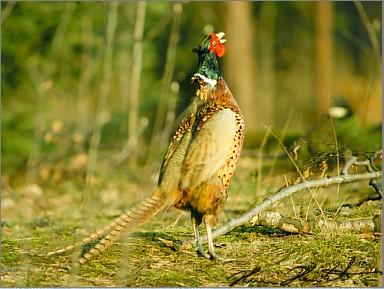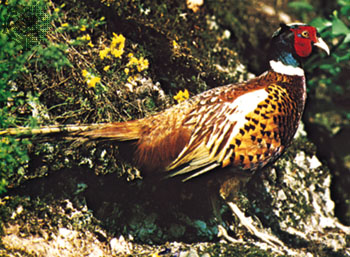


The centre of distribution of pheasants was originally from China to Malaysia is one of 48 species of pheasants. Since being introduced in 1790 and again in 1880, the ring-necked pheasant has become one of the most popular game birds in North America.. Several species, however, have been naturalized elsewhere--two thousand years ago or so in Anatolia and Europe--and many are prized as ornamentals in zoos and private collections; they are also raised for sport in shooting preserves. Some species have been brought to the verge of extinction by hunting.
The common pheasant (Phasianus colchicus; see photograph) has 20-30 races ranging across Asia. Birds naturalized elsewhere are mixtures of races, with the gray-rumped ringneck (or Chinese) strain usually dominating.
The pheasant prefers grain fields near brushy cover. The male, about 90 cm (35 inches) long, with streaming, narrow, cross-barred tail, has a brown back and coppery breast, purplish-green neck, and two small ear tufts; his entire body is speckled and barred. He collects a harem of about three brownish, relatively short-tailed hens. The grassy nest contains about 10 eggs, which hatch in three to four weeks.
